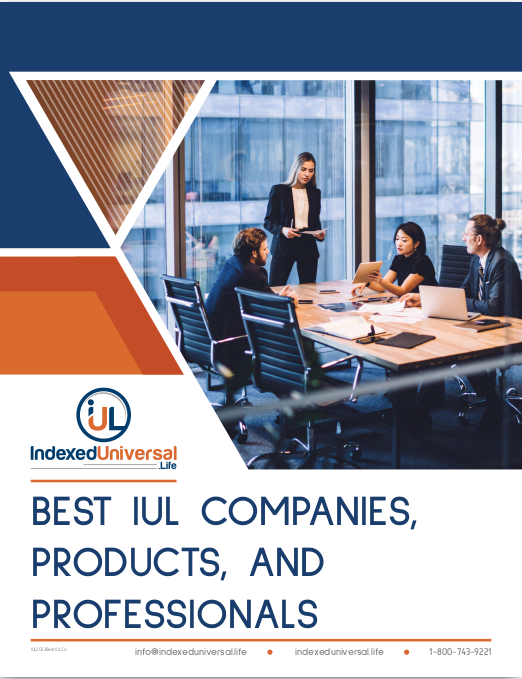
Key Takeaways
- Indexed Universal Life (IUL) insurance offers a unique balance of potential growth and protection, but it’s crucial to understand both the rewards and the inherent risks.
- Misunderstanding the complexities and risks associated with IULs can lead to financial losses, making it essential to adopt effective risk management strategies.
The Risk-Reward Balance of IULs: Understanding Potential Losses
Indexed Universal Life (IUL) insurance policies have gained popularity due to their potential for significant financial growth combined with the security of a death benefit. However, like any financial product, IULs come with their own set of risks and rewards. This article explores the delicate balance between potential gains and losses, helping you understand the complexities involved in IULs and how to navigate them effectively.
Unveiling the Complexities of IULs
IULs are a type of permanent life insurance that offer policyholders the chance to accumulate cash value based on the performance of a selected stock market index, such as the S&P 500. Unlike traditional whole life insurance policies, the cash value in an IUL is not tied directly to the stock market but rather reflects the performance of the chosen index, subject to certain caps and floors. This structure provides the opportunity for higher returns compared to other life insurance policies, but it also introduces a level of complexity that can be challenging to navigate.
The Structure of Indexed Universal Life Insurance
An IUL policy consists of two main components: the insurance component and the investment component. The insurance component provides the death benefit, which is paid out to beneficiaries upon the policyholder’s death. The investment component, on the other hand, allows the policyholder to allocate funds to a selection of indexed accounts. These accounts grow based on the performance of the chosen indices, but they are subject to participation rates, caps, and floors, which can limit both the upside potential and the downside risk.
Balancing Rewards: Potential Gains from IULs
One of the main attractions of IULs is the potential for substantial financial gains. By linking the cash value growth to a stock market index, policyholders can benefit from market upswings without being directly exposed to market losses. For example, if the selected index performs well, the cash value of the policy can grow significantly. This growth can be used for various purposes, such as funding retirement, paying for education, or supplementing income.
However, it’s important to remember that the returns on an IUL are not guaranteed. The actual performance of the policy depends on the market conditions and the terms set by the insurance company, including caps and participation rates. Therefore, while there is potential for high returns, there is also a risk that the growth may not meet expectations.
Identifying and Understanding the Risks of IULs
Despite the potential for gains, IULs carry several risks that policyholders need to be aware of. One of the primary risks is the complexity of the product itself. The various features and terms, such as participation rates, caps, and floors, can be difficult to understand and may affect the overall performance of the policy. Additionally, market volatility can impact the growth of the cash value, leading to periods of low or even negative returns.
Another significant risk is the cost of the insurance itself. IUL policies often come with higher fees and charges compared to other types of life insurance. These costs can eat into the cash value growth, especially in the early years of the policy. Furthermore, if the policyholder is unable to keep up with the premium payments, the policy may lapse, resulting in a loss of both the death benefit and the accumulated cash value.
Common Misunderstandings About IUL Investments
There are several misconceptions about IULs that can lead to unrealistic expectations and financial disappointment. One common misunderstanding is the belief that IULs provide guaranteed returns. While IULs offer the potential for higher returns compared to traditional life insurance, the returns are not guaranteed and are subject to market performance and policy terms.
Another misconception is that IULs are a low-risk investment. While IULs do offer some protection against market downturns through their floors, they are not without risk. Policyholders can still experience periods of low or no growth, and the costs associated with the policy can further impact the overall performance.
Additionally, some people believe that IULs are a suitable investment for everyone. In reality, IULs are best suited for individuals with a higher risk tolerance and a good understanding of the product’s complexities. Those who are looking for a straightforward, low-risk investment may be better served by other financial products.
Strategies for Managing and Mitigating IUL Risks
To effectively manage the risks associated with IULs, policyholders should consider several strategies. First and foremost, it’s essential to thoroughly understand the terms and conditions of the policy. This includes knowing how participation rates, caps, and floors work and how they can impact the growth of the cash value.
Working with a knowledgeable financial advisor can also be beneficial. A financial advisor can help you navigate the complexities of IULs and develop a strategy that aligns with your financial goals and risk tolerance. They can also help you monitor the performance of your policy and make adjustments as needed.
Additionally, policyholders should regularly review their policy and consider making changes if their financial situation or goals change. This may include adjusting premium payments, changing the allocation of funds, or even considering other financial products if the IUL no longer meets their needs.
Navigating the Risk-Reward Balance
In conclusion, IULs offer a unique blend of potential growth and protection, making them an attractive option for some investors. However, the complexities and risks associated with IULs cannot be overlooked. By understanding these risks and implementing effective risk management strategies, policyholders can better navigate the delicate balance between potential gains and losses, ensuring that their IUL policy works for their financial goals.





